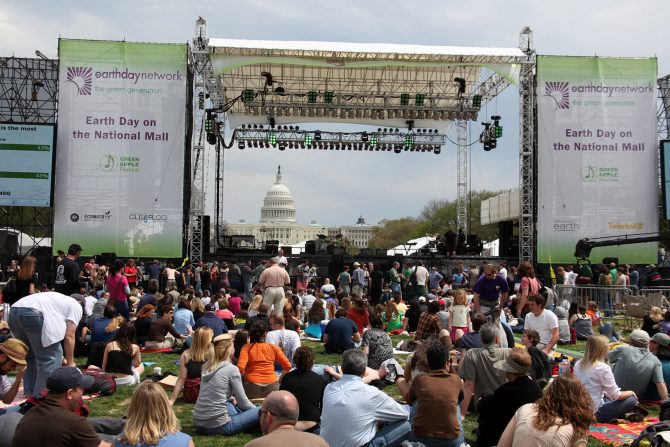Today marks the 50th Anniversary of Earth Day.
It’s a weird year to be celebrating Earth Day, not being able to gather in celebration of the Earth, but we do it all the same.
If you’re like me, you were reminded that Earth Day was coming up by last week’s episode of ABC’s Mixed-ish, in which a young Rainbow learns about the hole in the Ozone Layer and campaigns in a few bumbling ways to recognize Earth Day at her school. (Just as a heads up, this show takes place in 1985. Most schools probably at least know what Earth Day is nowadays.) It was a heady reminder that something as common as recycling, limiting the use of aerosol and freon, and even finding and using biodegradable materials is something that might have been completely mindboggling to someone fewer than 40 years ago—because even though the 80s still feel to some of us like the modern age, things were a whole lot different.
The first Earth Day was held on April 22, 1970, as an “environmental teach-in.” There were about 20 million people involved nationwide. It was the result of Americans being more interested in and concerned about the environment and the effect ever-increasing industrial efforts had on it. US Senator Gaylor Nelson and Harvard graduate student Denis Hayes sought to utilize the momentum of the anti-war movement to corral consideration of environmental protection into actual federal action by gathering people in celebration and contemplation. While the largest gatherings that year were in New York City and Washington, DC, word spread and efforts grew over the course of the next twenty years, when Senator Nelson managed to organize a global Earth Day in 1990.
Over the course of those twenty years, we saw the introduction of the Clean Air Act, the heavy restrictions of DDT use in commercial crops, the Endangered Species Act, and the establishment of the US Environmental Protection Agency.
And over fifty years, we've celebrated it by having gatherings (remember those?), planting trees and gardens, and sharing ideas and tools in person and online. We've made global commitments to turning out lights or saving one insect we might have otherwise killed. Things it might not help to do as an individual, but that can contribute still-unknowable possibilities for the future.
Nowadays, the majority of Earth’s citizens are at least more knowledgeable, if not always more cognizant, of issues of climate control, land and water rights, and hazardous materials. We also know more about endangered species and efforts to retain a diverse ecosystem. But Earth Day is the day to keep putting out the reminders to do the easy things so the experts can keep doing the hard stuff.
Recycle, so we can preserve resources that are made from finite materials and lessen the amount of trash in landfills.
Read up on the science about methane and other greenhouse gases and the effects they have on the air between the Earth and the black layer of space. Then decide what you want to do about it.
Use fewer fossil fuels if you can, and consider other ways to lighten your carbon footprint if you can’t.
Remember that climate change is real.
If you’re curious to know more, watch some of these environmental science documentaries on Kanopy:
American Experience - Earth Days
The Climate Change Denial Industry: James Hoggan
So read and watch up, think about some stuff, and then go for a socially distant walk. Breathe in the clean air and the scent of spring plants and flowers, and enjoy a bit of this Earth we've got.




